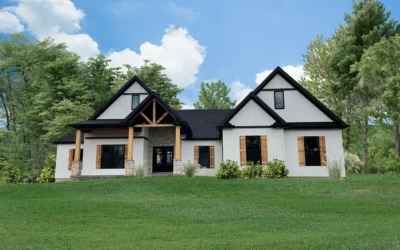5 Factors that Influence the Cost of Your New Home
Cost is usually the first thing people consider when buying or building a new home. If you’re considering building a new home, there are several things that determine what you’ll ultimately end up paying. According to the National Association of Home Builders, the average single-family home in a 2017 construction cost survey cost $237,760. But those costs vary with each home build. Here are 5 factors that influence your new home’s cost:
Neighborhood
As the adage says: location, location, location. Where you’ll be located is one of the biggest factors in how much your home will cost. Crime rates, proximity to good schools and other amenities are factors, as are the value of the other homes in the neighborhood. If every other home on the block is worth $300,000, even a modest home will likely be valued more highly than it would in a less affluent neighborhood. Location also determines what you’ll pay in property taxes and land development costs and fees.
Size
If you’re building new, the size of your home will likely be one of the biggest price determinants. Obviously, bigger houses cost more than smaller ones. According to the National Association of Home Builders, the average single-family home in the 2017 survey was 2,776 square feet. The biggest expenses in the home build process are framing and “interior finishes,” like insulation and drywall. Having a larger home may also necessitate a larger lot, which in turn will cost more in land price and development.
Design
Along with size, the design of your home will influence how much it costs to build. One-story homes cost more per square foot because they take up a bigger footprint than a two-story would to occupy the same square footage. That translates into more excavation and foundation work, plus rafters/roof installation (part of the framing process), which are costly. Two stories may take longer to build, but costs less per square foot.
Aside from the number of levels, having a complicated home design will add to the cost, as well. Simple frame homes use less materials and are easier to put together; designs that are complicated or require more engineering will cost more, in materials and in labor.
Materials Used
The perks of building your own home include being able to make it exactly the way you want. That means you can opt for high-quality materials. But keep in mind that high-end fixtures like granite countertops and wooden floors will drive up your home’s cost. Market factors that are out of your control may be at play, too. Lumber costs, for instance, are on the rise right now thanks to tariffs on Canadian lumber. Check with your contractor to see what materials will give you the best value.
Other factors include the number of bedrooms and bathrooms. Bathrooms are one of the most expensive rooms in the house, so having three or four of them will drive up the overall cost of your home. Kitchens are expensive, too, so a large, state-of-the-art kitchen could end up being expensive. The plus side is that those rooms could provide some of the best return on investment should you decide to sell later.
Supply and Demand
Both Lincoln and St. Charles counties are growing, but St. Charles is growing at a more rapid pace. That demand means it costs more to build or buy there than Lincoln County. Not only does that mean there are more people clamoring for homes, but it also puts more strain on the construction industry in the area. Nationwide, there’s a shortage of builders; if contractors have too much business, that will in turn drive up prices (and increase wait times).
The time of year could factor into your home build costs, too. Certain times of year are busier than others, so check with your design build firm to see when they have more time.
Still have questions? We’d love to help! Contact us here or at (636) 462-3500.



0 Comments